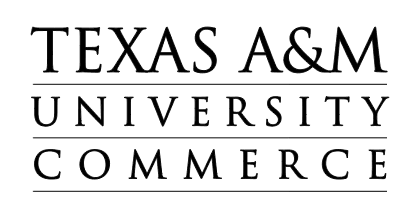Studio Arts
Students seeking a major in Studio Arts are required to select an emphasis in one of the following areas: Ceramics, Experimental Studies, Sculpture, or Painting. Each of these areas has a common core of foundation art courses, area concentration courses, and related support courses. All programs require the student to complete University Studies courses. Students in the BFA major are not required to select a minor.
Ceramics

A course of study in ceramics may be pursued as an emphasis in the Studio Art major (BFA). Ceramics is housed in a newly renovated state-of-the art facility. The ceramics studio includes a spacious work area for handbuilding and wheelthrowing, and separate spaces for plaster work and slip casting, raw material storage, clay mixing, glaze mixing, and glaze application. Individual studios are provided for graduate students; advanced undergraduate students have a designated work area. Equipment includes 20 electric and kick wheels, a slab roller, two extruders, a Soldner clay mixer, a Venco pug mill, a ball mill, a sandblaster, five top-loading electric kilns and a front loading Olympic electric kiln; a Laguna raku kiln, two Alpine updraft kilns (one used for soda firing), two Geil downdraft kilns, and a wood kiln.
Ceramics courses introduce students to the wide range of artistic expression possible in the use of clay as an art medium. Students acquire proficiency in forming techniques, glazing and other surface treatments, and kiln firing. The study of historical and technical developments relates ceramics to other three-dimensional media, as well as to the broader history of art. An active visiting artist program and field trips to area collections and exhibitions augment the ceramics curriculum. As a student progresses through the ceramics curriculum, increased emphasis is placed on developing the ability to produce expressive objects that embody content and are sophisticated, knowledgeable, and resolved.
Experimental Studies
The curriculum of the BFA in Experimental Studies is based on the fact that contemporary art is often multimedia in nature, created outside the boundaries of traditional media. The Experimental Studies program permits students to pursue a BFA by taking courses in a variety of media rather than in one alone. Because art courses leading to this degree are designated by a total number of hours rather than by medium, students are empowered to select courses in order to fit their particular needs and interests. By emphasizing breadth over specialization, the BFA in Experimental Studies prepares the student especially well to function in the contemporary, pluralistic art world, as well as to pursue a career in teaching, where a range of experience is an asset in the public schools and, increasingly, in entry-level college positions. A key component of the BFA in Experimental Studies is the course, Experimental Concepts (Art 380). This course, which may be taken twice, addresses the creative process, specifically the generation and development of content in art. The course is not medium-specific and thus encourages the student to explore various thematic projects through whatever format, strategy or media appropriate to his or her work. Class projects range from the traditional art media to installations and collaborations to video and other electronically-generated media.
Painting

The program in Painting provides a diversified background in visual organization, critical thinking, hand skills in a variety of media, art history and contemporary art criticism, and practical experience in the business of art. The program emphasizes a rigorous foundation in painting technologies combined with the encouragement to develop an individual means of expression. Field trips to museums and galleries in the Dallas-Fort Worth area as well as a strong visiting artist program to reinforce the learning experience and provide students with the opportunity to investigate a wide range of art that may be similar to, compatible with, or in contrast to their own ideas.
Our painting graduates have gone on to top tier graduate programs and professional careers in art practice, all level art teaching, art administration as well as careers in museums, galleries and alternative spaces around the country and internationally. Some of our painting students have been awarded full scholarships to the Skowhegan School of Painting and Sculpture, a very competitive art residency program located in Maine.
Our painting program was represented recently in three consecutive Whitney Biennial Exhibitions. The Whitney Biennial is recognized by art professionals around the world as a benchmark of contemporary art making. Our students have achieved gallery representation at important, significant galleries in Texas, New York, Los Angeles, Chicago and internationally.
The Painting studio is spacious and well-lighted, with areas for critiques, instruction and exhibitions. It includes professional easels and tabourets, large work tables, airbrush stations, supply lockers and storage racks. To assist students building stretcher frames, the Department of Art offers a monitored wood shop. The wood shop is equipped with professional equipment including a table saw, power mitre saw, drill press, and most any other equipment one might need in an art making process.
Sculpture

Students who work towards a BFA in Studio Art with a Concentration in Sculpture are encouraged to experiment with a broad range of materials and techniques when making work that communicates their ideas. Students may become heavily involved in object making, video, sound, installation and performance works. Learning about contemporary art and artists is also an important component to the curriculum. In addition to reading and discussion, students are encouraged to take advantage of gallery and museum opportunities in the DFW area. Classes are sometimes held at the Dallas Museum of Art and the Modern Art Museum of Fort Worth.
Facilities in the Sculpture Department support a complete range of activities at both the undergraduate and graduate levels. The spacious sculpture studio includes overhead doors that allow for larger works and materials to be moved into and out of the woodshop, studio spaces and critique area. The shop includes a table saw, several band saws, a drill press, disc and belt sanders, a jointer, planer, radial arm saw, compound miter saw, air compressor, hand tool room, sewing machine, spray booth and work tables. Currently, the Sculpture and Engineering Departments are partnering to share a large metal shop, equipped with several oxy-acetylene welding stations, a MIG Welder, horizontal band saw, drill press, metal band saw, circle roller, metal shear, plasma cutter, cut-off saw and foundry. Individual and shared studio spaces are available for graduate art students and undergraduate sculpture majors. Additionally, a separate video lab is available to sculpture students in the main art building. Large screen Macs are equipped with Final Cut Pro, Photoshop and iMovie. Computers are connected to a scanner and several video cameras and tripods are available for students to check out.













